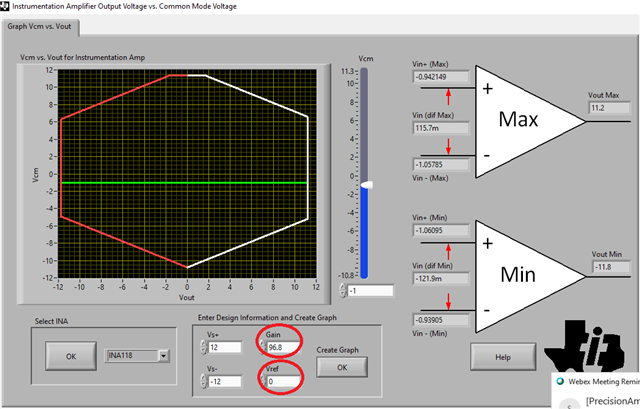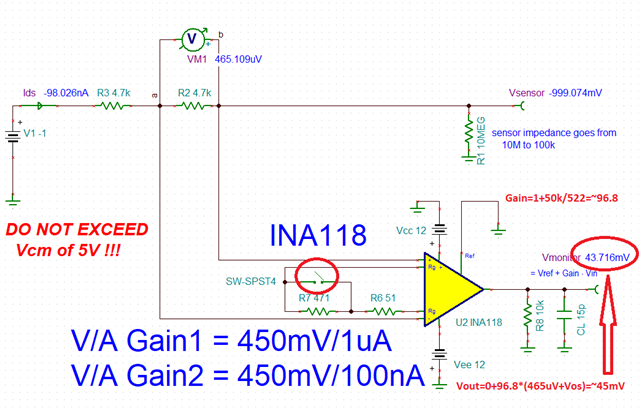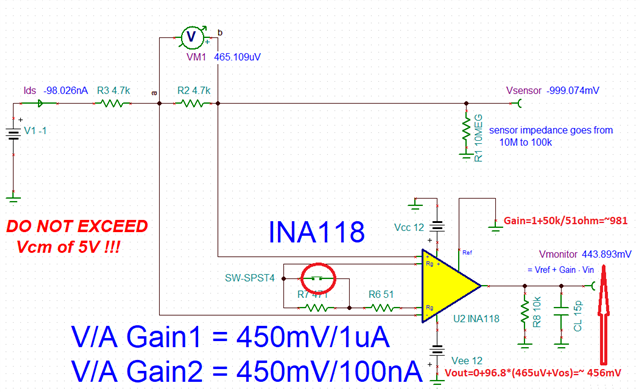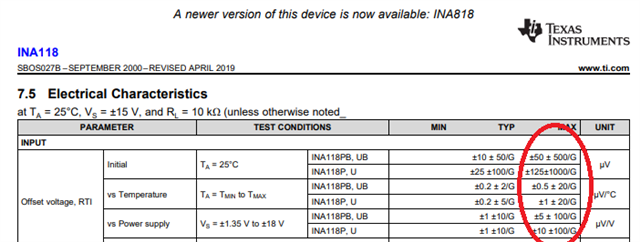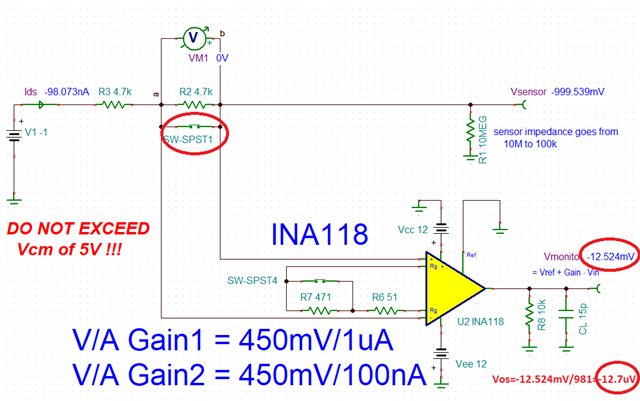Other Parts Discussed in Thread: INA828, INA188
Dear Support,
I used the INA118 to sense the current flowing into a sensor. The sensor is biased with a V= -1V. The current flowing into the sensor span the range from 0 to 1uA.
Please see the attached schematic.
current_sensing_with_INA118_E2E.TSC
In order to calibrate the system, supply voltage is provided by a Keithley SMU, able to measure the output current with pA resolution.
Unfortunately, the current read-out by the INA118 does not match with the value shown by the Keithley. The INA output shows a current which is lower than the one
displayed by the Keithley by almost 50nA. I have tested the SMU and I have found it to be perfectly fine: the problem is in the INA118 circuit.
I have accurately measured both the sensing resistor (4.7k +/- 0.1%) and the Gain Resistor (471+51 +/- 0.1%). Also, the INA CMV is not violated.
I am wondering if such a difference between the SMU readout and the INA118 could be due to its input current bias/offset . I also changed the INA118 with a INA828 (lower bias/offset), without any improvement. My measurements are basically in DC, so, if beneficial, the bandwidth could be drastically reduced. Should I filter the INA inputs? In such a case please suggest me a filter topology to be inserted just before the INA, not disrupting its CMRR.
I really appreciate receiving your advice.
Thank you so much for your support.
Best,
Alberto


